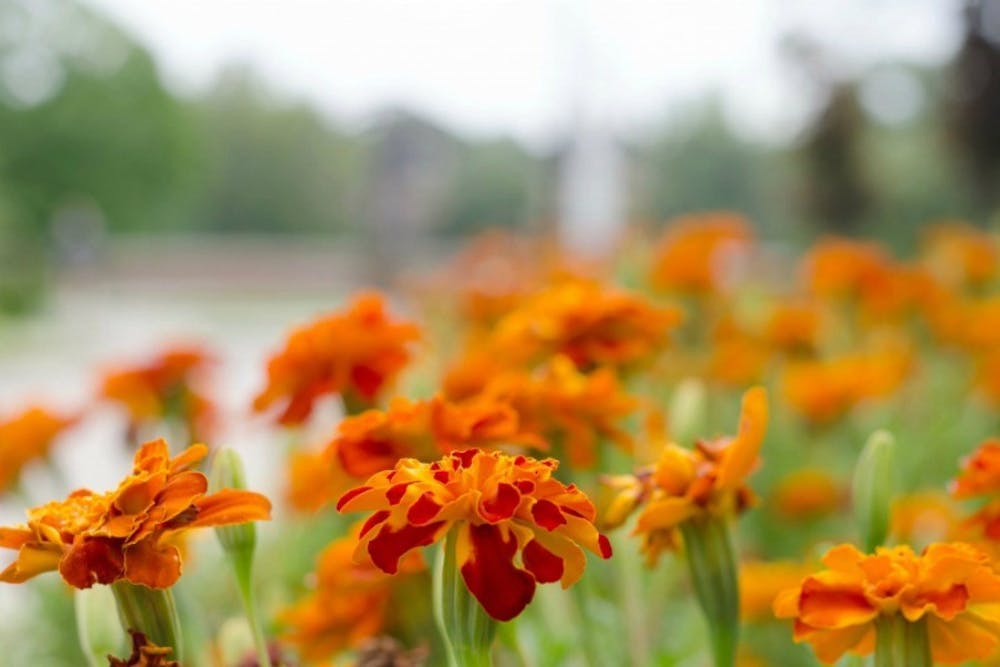By Emily Williams, Managing Editor
Early Tuesday morning, Miami horticulturist Bill Zehler got a call from one of the university's maintenance workers. Someone had defaced the floral "M" outside of Pearson Hall. That "M" is the most photographed flowerbed on Miami's campus, Zehler said. Most people will stand behind it, to the side or in front.
But others feel the need to get right in the middle of it.
Zehler has worked at Miami for 20 years, designing and maintaining the over 20 flower beds on campus, including the university's Formal Gardens. Every year, Zehler and a team of horticulturalists plant over 18,000 flora around campus.
Students trampling on the "M" isn't the only problem Zehler has to deal with, either. It's just one of many botanic blunders that he has to handle on a regular basis.
A couple weeks ago, someone took a dive into a flowerbed in front of Roudebush Hall.
Just this year, he's had to replace about a dozen of the ornamental cabbage plants around the Sundial after they had been kicked, trampled or pulled out of the ground.
After he put pumpkins in front of Lewis Place, the university president's residence on Spring Street, someone came by and smashed a pumpkin on the sidewalk. Other pumpkins have been whisked away without a trace.
A lot of students take a shortcut through the back of Lewis Place on their walk Uptown, Zehler said. One fall, the mums placed in the property's yard went missing. Zehler followed the trail of trampled mum petals to the porch of a frat house where the pot of mums was sitting. That happened three more times just that season.
One of the biggest problems he's encountered is students stealing the red and white tulips that are planted around the Sundial in the spring. One spring, at least four dozen of the tulips -- the entire patch of flowers from one corner of the bed -- were stolen.
"The thing with tulips is, if everybody took one, we wouldn't have any," Zehler said. "We can do things to keep the deer from eating them, but it's hard to keep the people from picking them."
Although it's never been the same from year to year, Zehler said he's been dealing with these instances for 20 years. This year, however, he said there seems to be more.
"This university is known as one of the most beautiful in the country," Zehler said. "You would think that people would respect the property."
Zehler said he knows most people aren't guilty of this -- it's only a small percentage of students who are guilty of it and the infractions can also vary from accidental trampling to intentional vandalism.
So the next time you're traipsing across campus after a late night Uptown, think twice before you tumble through the tulips or pickpocket a pumpkin. If you're standing in front of the "M" and feel the need to "do it for the 'gram," think again. The deer population in southwestern Ohio already causes enough horticultural challenges without adding us into the equation.
As for picking the flowers, if you're really pining for some perennials, I recommend the Oxford Farmer's Market, where you can get a beautiful bundle of fresh buds for $5 or less--supporting the community, staying frugal and avoiding theft and vandalism all in one fell swoop.
It's not just about respecting the campus (which you pay big bucks to every year to keep pretty, by the way). It's also about respecting the work of people like Zehler whose work allows to brag about how our campus is "the most beautiful campus that ever there was."
willi501@miamioh.edu

